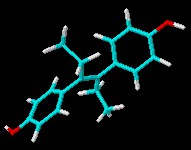It’s the news that should set the press a tremble, but fellow science journalist Natasha Loder has had to resort to posting an item about the refusal of Pakistan to grant leading Himalayan earthquake expert Roger Bilham an entry visa on her blog. At a time when one would expect intellectual activity in this field to be desperately needed, apparently scientists are not allowed into the country because this is not a time for “intellectual activities”, reports Loder.
Bilham and his colleagues at the University of Colorado have been forewarning of a major Himalayan earthquake for years, but the Kashmir earthquake released only a tenth of the potential energy stored in the region and Bilham further expects geological unrest.
His expertise could provide critical clues to when and where that pent up energy might be released…surely such intellectual activity is not just desirable but essential.
 Dan Lednicer offered us a guest editorial some time ago that mentioned the ill-fated drug diethyl stilbestrol (DES) and the toxicity of this and other compounds. Here’s the 3D chemical structure of DES for recent visitors to Sciencebase who were looking for it!
Dan Lednicer offered us a guest editorial some time ago that mentioned the ill-fated drug diethyl stilbestrol (DES) and the toxicity of this and other compounds. Here’s the 3D chemical structure of DES for recent visitors to Sciencebase who were looking for it!